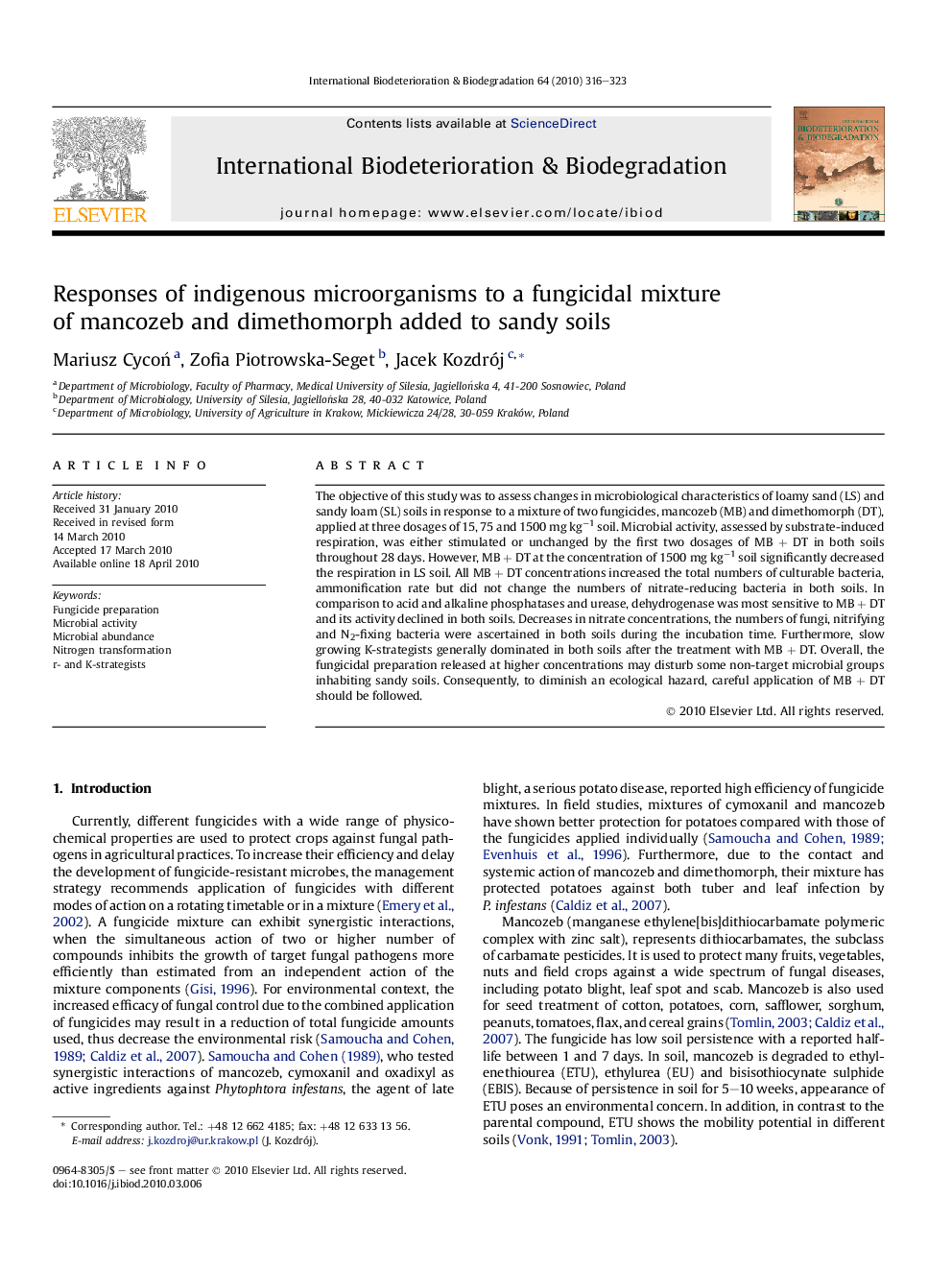| Article ID | Journal | Published Year | Pages | File Type |
|---|---|---|---|---|
| 4365572 | International Biodeterioration & Biodegradation | 2010 | 8 Pages |
The objective of this study was to assess changes in microbiological characteristics of loamy sand (LS) and sandy loam (SL) soils in response to a mixture of two fungicides, mancozeb (MB) and dimethomorph (DT), applied at three dosages of 15, 75 and 1500 mg kg−1 soil. Microbial activity, assessed by substrate-induced respiration, was either stimulated or unchanged by the first two dosages of MB + DT in both soils throughout 28 days. However, MB + DT at the concentration of 1500 mg kg−1 soil significantly decreased the respiration in LS soil. All MB + DT concentrations increased the total numbers of culturable bacteria, ammonification rate but did not change the numbers of nitrate-reducing bacteria in both soils. In comparison to acid and alkaline phosphatases and urease, dehydrogenase was most sensitive to MB + DT and its activity declined in both soils. Decreases in nitrate concentrations, the numbers of fungi, nitrifying and N2-fixing bacteria were ascertained in both soils during the incubation time. Furthermore, slow growing K-strategists generally dominated in both soils after the treatment with MB + DT. Overall, the fungicidal preparation released at higher concentrations may disturb some non-target microbial groups inhabiting sandy soils. Consequently, to diminish an ecological hazard, careful application of MB + DT should be followed.
